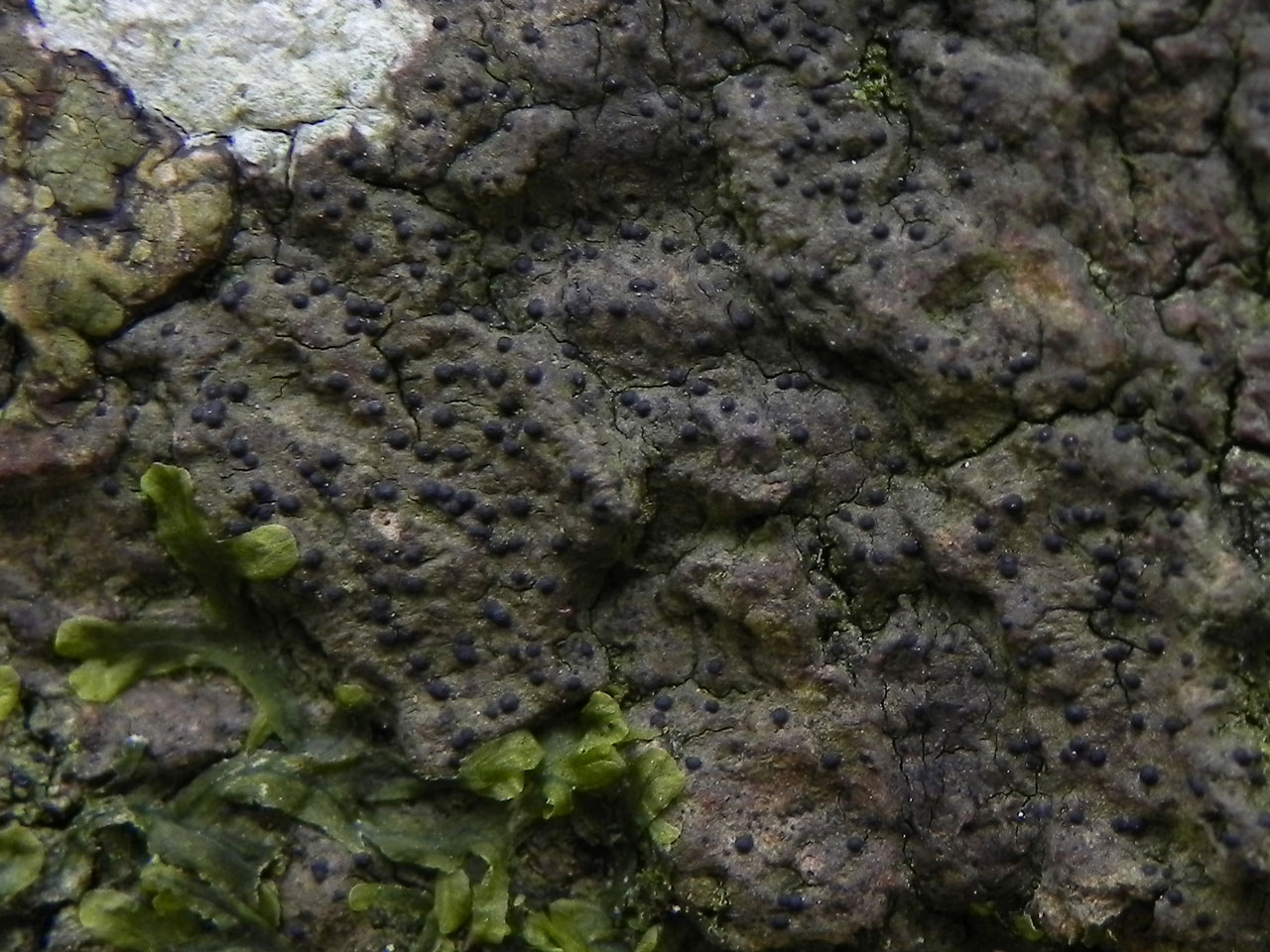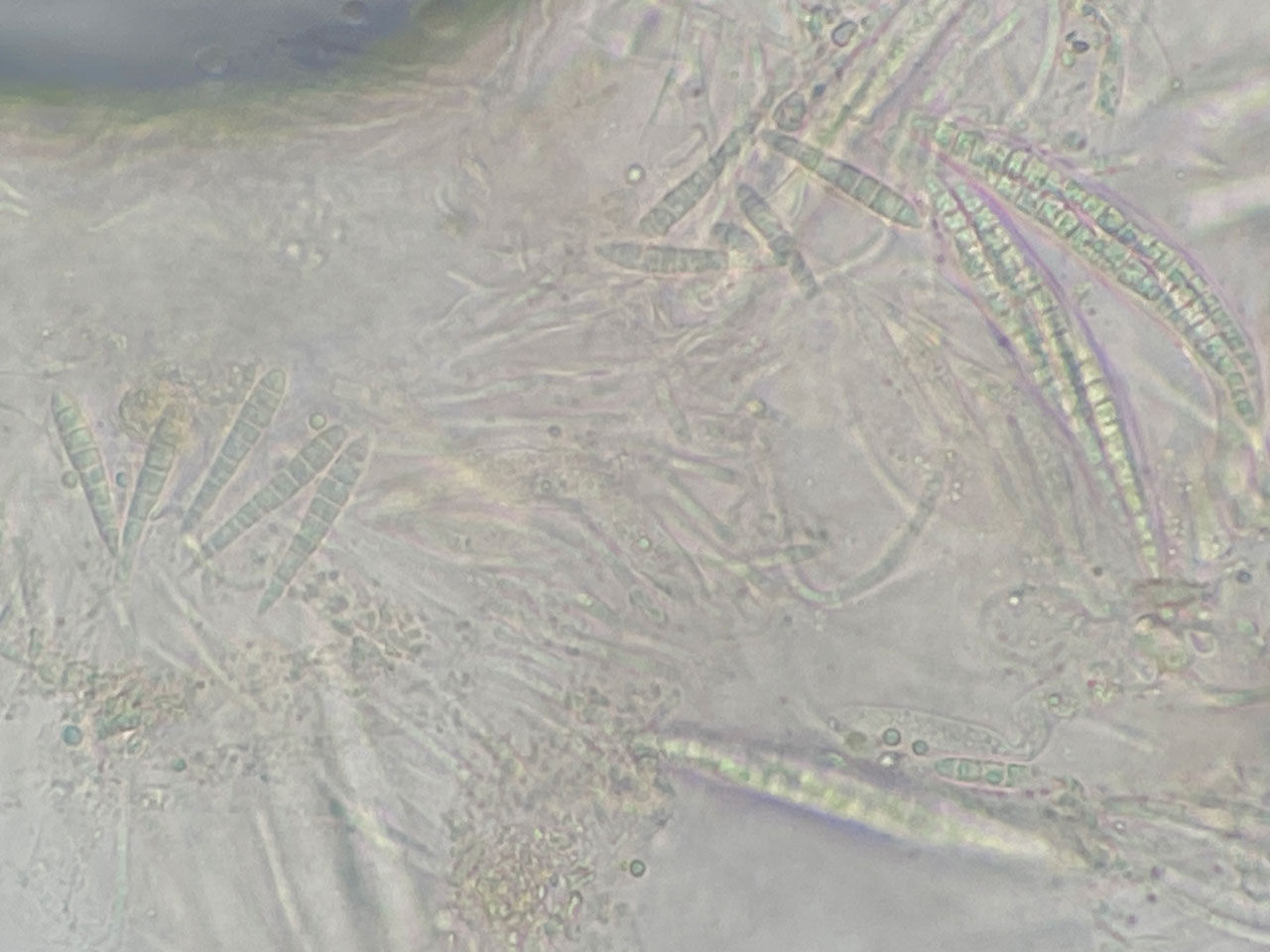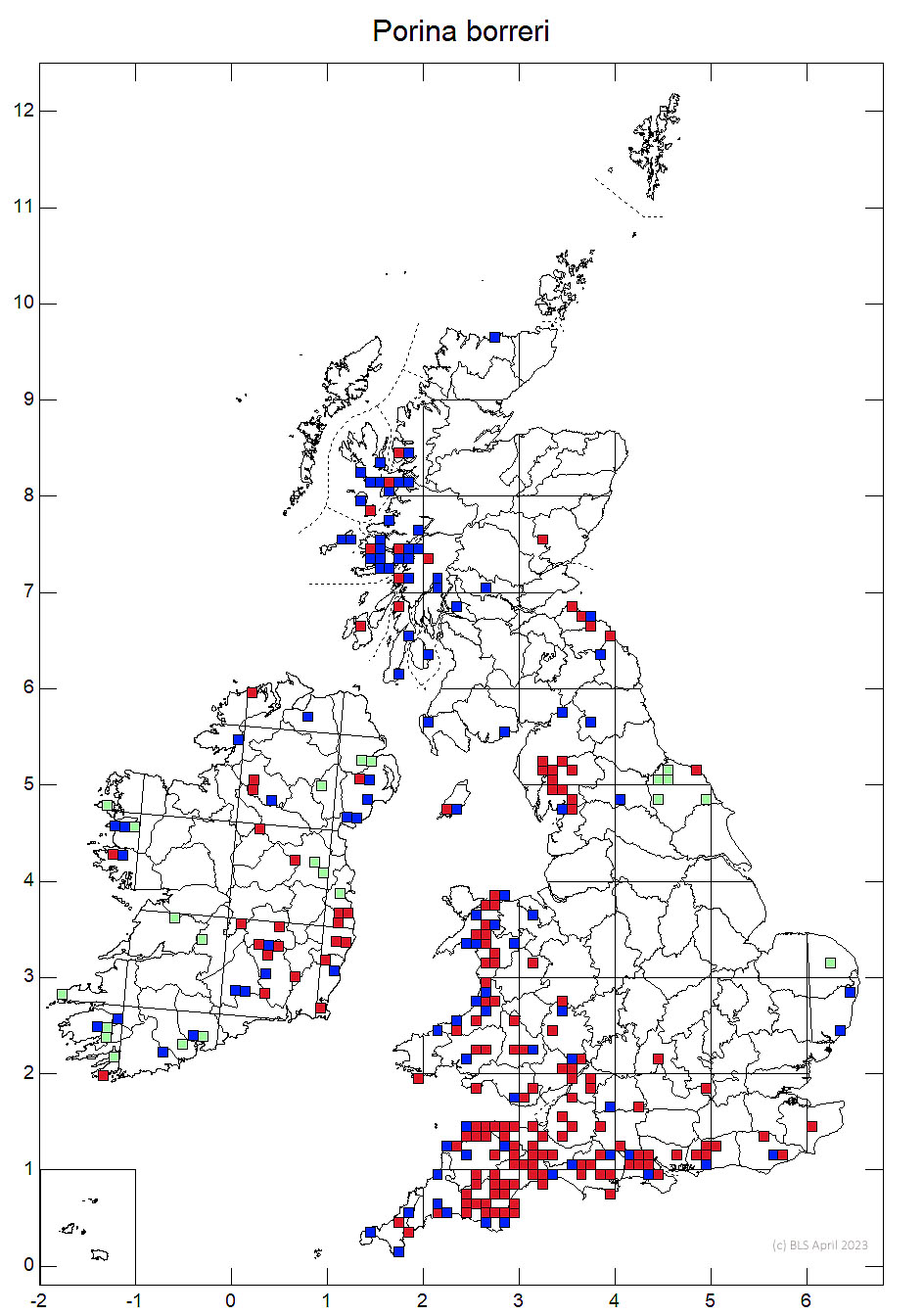Found as prominent black perithecia set in a dark thallus in wound tracks on older trees and bushes, with 6-7 (-8)-septate ascospores. Similar species on bark include Porina aenea which has markedly smaller perithecia and P. byssophila that has slightly smaller but often clustered perithecia, both have 3-septate ascospores.
Thallus superficial, well-developed, grey-brown to green-brown or blackish olive, continuous to cracked. Perithecia 0.2–0.36 (–0.5) mm diam., black, prominent (one third to half immersed in the thallus); involucrellum purple-violet to purple-brown or brown, dulling in K, or K+ grey-brown to brown, containing some photobiont cells; exciple colourless or faintly brown below. Ascus apex truncate, with a ring structure. Ascospores clavate, 6-7 (-8)-septate, (22.5–) 28–35 (–40) × (3–) 4.5–5 (–5.5) µm with a length to breadth ratio of less than 10 (typically between 6 – 8). Conidia cylindric-ellipsoidal, 2–3.3 × ca 1.2 µm.
Porina aenea has markedly smaller perithecia and P. byssophila has slightly smaller but often clustered perithecia; both have 3-septate ascospores. The apparently very rare Porina leptospora, is very similar but has narrower and longer fusiform ascospores with a length to breadth ratio of between 12 to 18.
On base-rich bark of old trees, especially in wound tracks; particularly on Oak, Beech, Holly, Ash and Sycamore, in old woodlands and parklands; also on wounds on bark of shrubby trees (Hazel and Rowan), rarely spreading to bryophytes.

Widespread but local. S. & S.W. England, Wales, Scotland, Ireland.
Historically probably lost sites to acidifying pollution in the east and will have suffered population reductions with Dutch Elm Disease generally, with Ash Dieback a current threat. The wide range of tree species used buffered it from DED and should also help minimise the impact of ADB. There is a suggestion of recovery from past acidifying pollution in recent range extensions into south central England
Britain: Notable
Orange, A., Cannon, P., Malíček, J., Sanderson, N., Coppins, B. & Simkin, J. (2021). Ostropales: Porinaceae, including the genus Porina. Revisions of British and Irish Lichens 4: 1-12.
Text by N A Sanderson, based Orange et al (2021)




